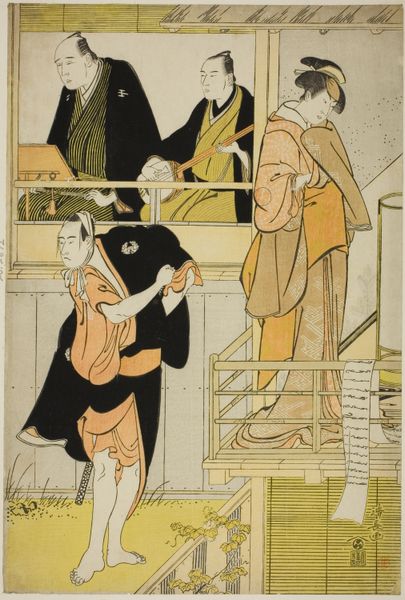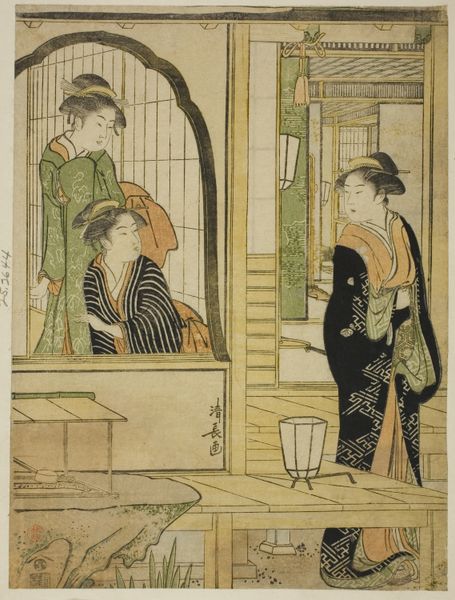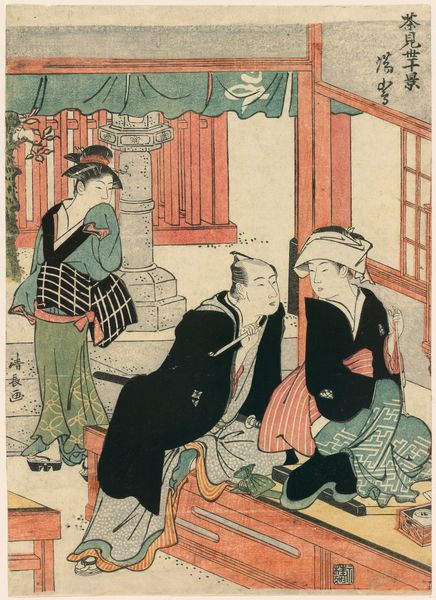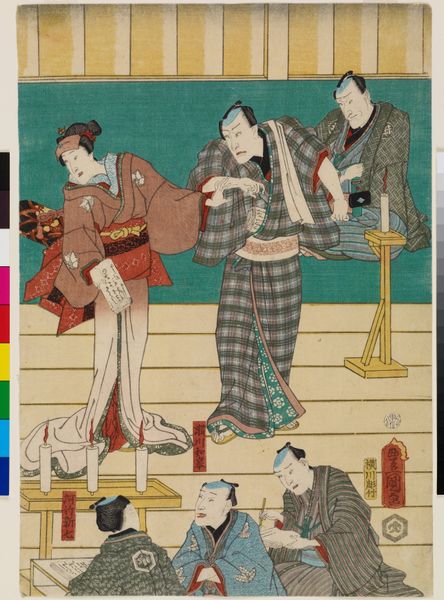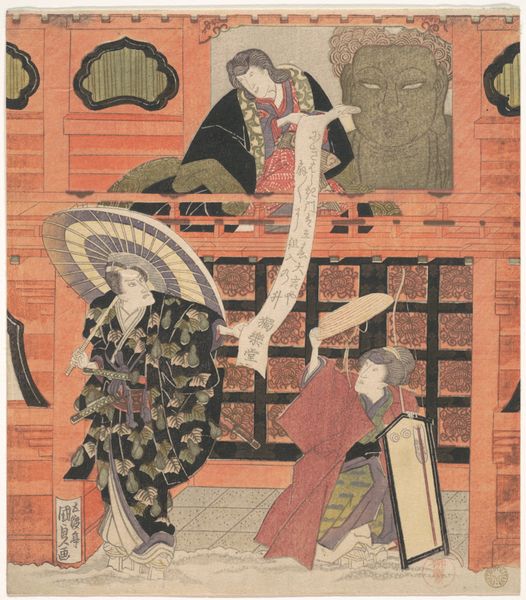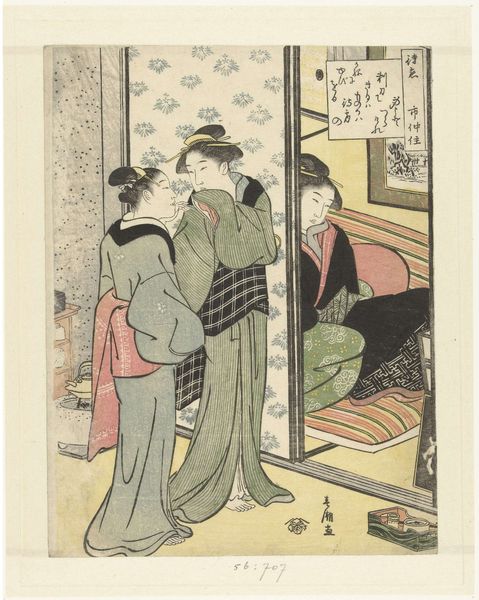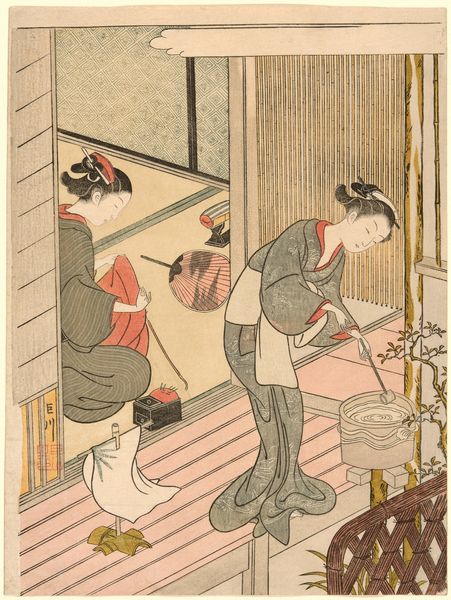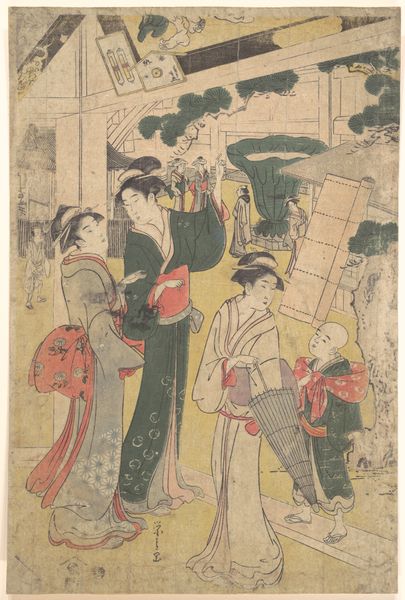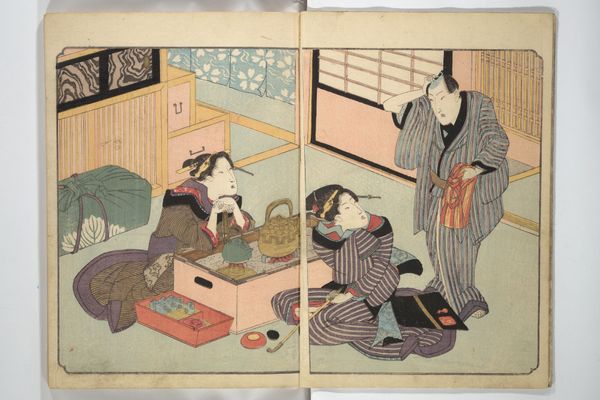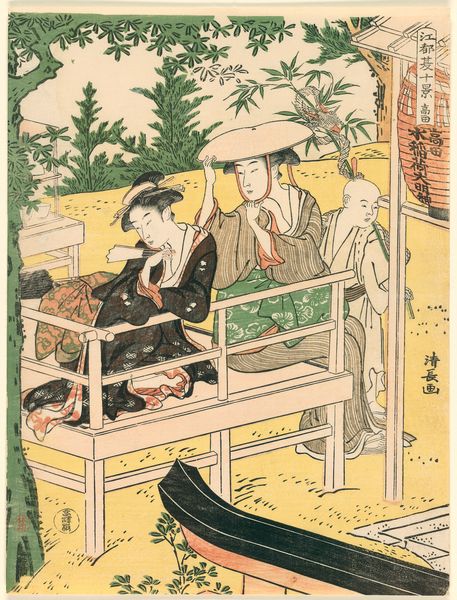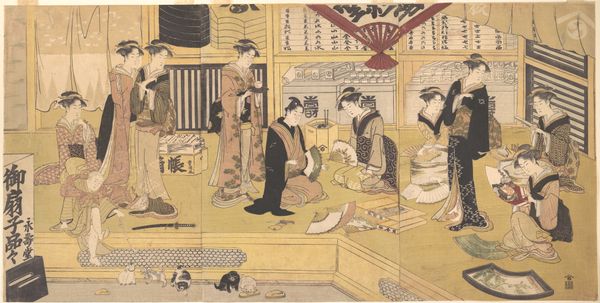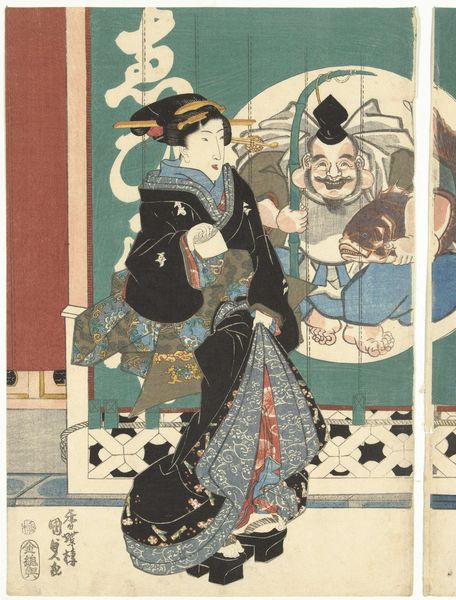
print, woodblock-print
#
food
# print
#
caricature
#
dog
#
asian-art
#
caricature
#
ukiyo-e
#
japan
#
woodblock-print
#
men
#
watercolour illustration
#
genre-painting
Dimensions: Image: 13 1/2 x 9 in. (34.3 x 22.9 cm)
Copyright: Public Domain
Editor: Here we have "Inside a Foreign Restaurant," a woodblock print by Utagawa Yoshikazu, made around 1860. It’s a busy scene! There are lots of figures, food hanging from the ceiling, and a dog hanging out on the floor. The restaurant seems cramped, almost chaotic. What can you tell me about this image, looking at it from a historical context? Curator: This print offers a fascinating window into Japan’s engagement with the West in the mid-19th century. The opening of Japan to foreign trade and diplomacy led to an influx of Westerners, which, in turn, fueled curiosity, and, as seen here, caricature. Note how the artist renders the foreigners with exaggerated features and mannerisms. How do you think the artist, or the intended audience, felt about these Western figures? Editor: It feels a bit…satirical? Like they’re being observed and, maybe, subtly mocked. Curator: Precisely! It’s important to remember that prints like this weren't simply innocent depictions. They were actively shaping public perceptions of foreigners and commenting on the social and cultural changes happening within Japan at the time. What do you make of the inclusion of the dog, positioned prominently in the foreground? Editor: Hmmm. It almost feels like another observer, a silent commentator, like the viewer themselves. And maybe highlighting some of the foreign oddities, through the eyes of a common creature? Curator: Interesting point! Also note the precise detailing of everyday restaurant scenes, in contrast to the slightly absurd depiction of the foreigners. Yoshikazu cleverly plays with realism and exaggeration, doesn't he? Editor: It does seem like he’s using humor to navigate some complex feelings about the changing world. This has really illuminated how art can function as social commentary. Curator: Exactly. And remember, prints were a form of popular media at the time, actively shaping public discourse and perceptions.
Comments
No comments
Be the first to comment and join the conversation on the ultimate creative platform.

